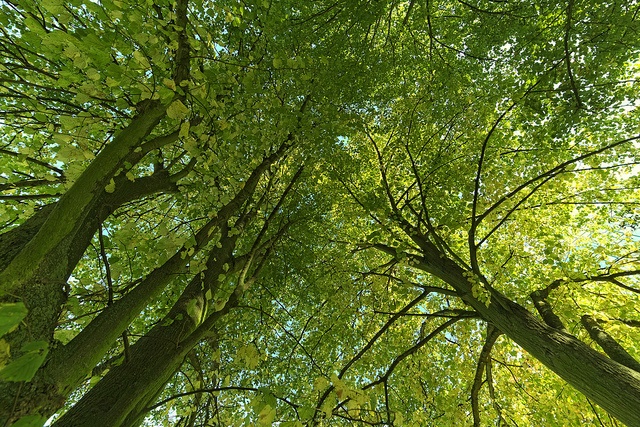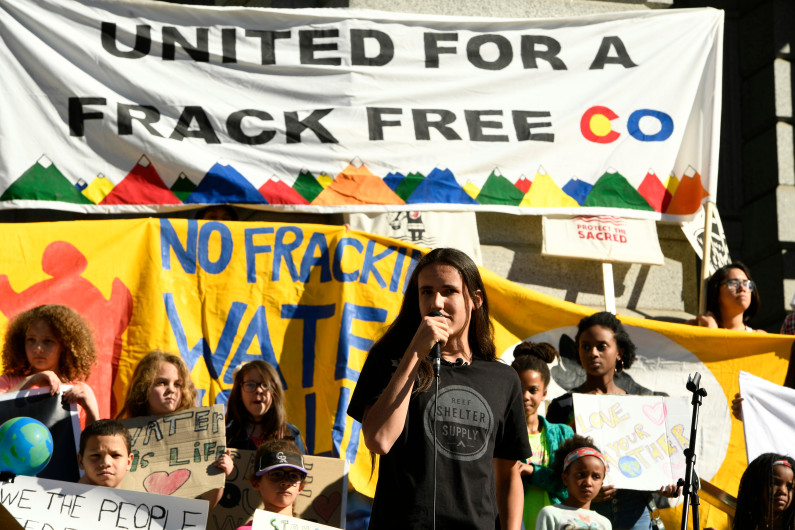Courageous Colorado youth who are challenging fracking in their state celebrated the decision of the Colorado Court of Appeals last week: the Colorado Oil and Gas Conservation Commission (COGCC) must consider the petition of the youth, who want the COGCC to discontinue issuing fracking permits until it has been determined it can be done without compromising the health and safety of people and the natural environment.
It is a win. How often do we hear the courts side on behalf of the people? Not often. How frequently do we hear the courts insist that health and safety take priority over fracking? Not frequently.
At the same time, let’s look at how far this win goes.
Who’s Deciding?
Who decides whether or not a permit is issued? The Court of Appeals did not change the authority of the COGCC – a state regulatory agency that has the authority to legalize harms to Colorado communities by issuing permits to oil and gas corporations. Those permits grant permission to the industry to carry out activities that would otherwise be illegal.
So, decision-making authority still rests with those regulators. We would venture a guess that the appointed body consists heavily of oil and gas interests, rather than being an elected body representing the health and safety interests of Colorado communities or the Colorado youth from this case.
There is the argument that if the COGCC must have evidence that fracking is safe before issuing permits, then we’re all set here. Right?
Not exactly. In fact, it comes back to who decides. Who decides what evidence is provided? Who decides how that evidence is produced? If you’ve heard the industry and regulators say there’s no evidence that fracking harms water supplies or releases enough methane to affect climate change…you get the idea.

Setting that aside, there is the fact that we have an unalienable right to make the governing decisions about what happens in the places where we live. What if there was lots of evidence demonstrating fracking could occur safely? (Never mind climate change and myriad other harms that make this an impossibility.) What if a community still didn’t want fracking?
They have the right to say no. It’s their community.
What a “Win” Looks Like in Other Communities
It’s not just in Colorado where many of us find ourselves fighting for “wins” that are more about trying to make the regulatory system work a little better, rather than fighting for systemic change and the recognition of our rights.
In Ohio, many “Big Greens” are focused on implementing higher severance taxes on oil and gas corporations.
Let’s say they achieve their goal. It will look like a “win,” and one that was hard fought.
In part, it again comes back to who decides. Who decides how the new funds will be used? Will the money go to the people in the communities for healthcare when they become ill? Or for clean water when their drinking water is contaminated? Or will it be returned to the companies in the form of subsidies or tax write-offs?
Further, the “win” would actually work well for the corporations. Ouch—they have to pay a bit more in taxes. But they can afford it. And nothing in the “win” has stopped them from continuing to exploit communities, sucking out resources, and accelerating global warming.
People have the right to say no to fracking. It’s not about saying, “No, unless you pay higher taxes.”
It’s their community.
Functioning Within the System
If we’re ok with not being the decision-makers in our own communities, then it may be enough for us to have the “win” from the Colorado Court of Appeals, and focus on trying to force the COGCC to accept the “right” kind of evidence (which is paradoxical because we would still be trying to be the decision-makers about what evidence is used). In Ohio, it might be ok to force higher taxes on oil and gas corporations, even though there is no guarantee the communities will ever benefit from those dollars.
When we look to those with power to do the right thing, we surrender our own power – and today, we do so at great risk to our children and grandchildren; in fact, to life as we know it.
If these are our aspirations, we will never achieve sustainability. We will forever be on the defensive. We will find ourselves still begging and pleading with those in authority to do the right thing. And we will always be at risk that even when we “win,” someone else will come along and overturn the decision.
When we look to those with power to do the right thing, we surrender our own power – and today, we do so at great risk to our children and grandchildren; in fact, to life as we know it.
As long as our “wins” allow the system to carry on with business as usual, we might want to reconsider if it truly is a win. We might want to explore changing our ideas and strategies of resistance.
What Do We Want in Our Communities?
Let’s get clear about what it is we want in our communities. And getting clear about what we want is different than asking what’s the best we can get. The latter assumes we’ve already lost and we’re just trying to mitigate the damages.
There is also a difference between governing our own communities and having the destruction of our communities “regulated” by others who don’t even live there.
Do we want clean air and water? Do we want healthy soil? Do we want sustainable energy and food systems?

Image: trees, by Jeroen Van Nieuwenhove in Flickr Creative Commons
Then let’s make it so. It’s not going to happen if we get the oil and gas industry to pay higher taxes in Ohio. Nor if we argue about what has to happen for fracking to be “acceptable” in Colorado.
It will happen when we own our right to make the governing decisions in the places where we live – before it’s too late.
The Community Environmental Legal Defense Fund (CELDF) assists communities across the U.S. and internationally to advance Community Rights and the Rights of Nature: the rights of communities to local, democratic self-government; the right to a healthy environment – including a right to climate; the rights of workers; and the rights of nature to exist and flourish. We rely on your support to advance these rights! Please donate today. You can make a difference.
Featured image: Xiuhtezcatl Martinez, a hip-hop artist and youth plantiff, leads a youth rally on the west steps of the Colorado Capitol Building on February 20, 2017 in Denver. Helen H. Richardson/, The Denver Post

